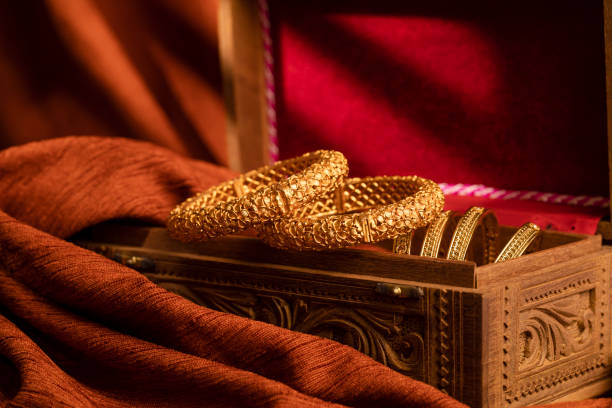By Sujata Muguda, Shreyas WebMedia Solutions
6/5/2024: The bangle, a seemingly simple circular bracelet, boasts a rich history and diverse cultural significance. Worn for millennia across the globe, bangles come in a dazzling array of materials, styles, and symbolic meanings. Today, we embark on a journey to explore the captivating world of bangles, delving into ancient traditions and their modern expressions.
A Timeless Legacy: Bangles from the Ancient World
The origins of bangles can be traced back to the Indus Valley Civilization, flourishing in present-day Pakistan and northwestern India around 3300 BCE. Archaeological finds reveal bangles crafted from seashells and terracotta, adorning the arms of figurines. These early bangles hint at the symbolic importance they held, potentially signifying social status or beliefs within this ancient society.
Across continents, bangles found their place in various cultures. In Mesopotamia, artisans crafted bangles from gold, silver, and glass, while Egyptians adorned themselves with intricate faience bangles. The ancient Greeks and Romans favored precious metals and gemstones, often etching their bangles with mythological figures or symbols. These early examples showcase the universality of the bangle’s appeal and its ability to transcend geographical boundaries.
A Tapestry of Traditions: The Symbolic Language of Bangles
Beyond aesthetics, bangles have carried cultural significance throughout history. In many societies, they served as markers of marital status, wealth, or social standing. The materials used, the number worn, and specific designs all held symbolic weight. For instance, in some parts of India, bangles are believed to bring good luck and blessings to the wearer. Certain bangles are worn only during weddings or religious festivals, further emphasizing their symbolic role.
A Realm of Materials and Techniques: A Bangle for Every Occasion
The world of bangles boasts an incredible variety of materials and techniques. Metal bangles crafted from gold, silver, or even iron are timeless classics, often featuring intricate engravings or gemstones. Glass bangles, particularly popular in India, come in vibrant colors and intricate patterns, adding a touch of cheerfulness. Lac bangles, made from lac resin, are a traditional Indian variety known for their lightweight and colorful nature. Shell bangles, harkening back to the Indus Valley tradition, continue to be crafted in some coastal regions.
Modern Interpretations: A Fusion of Tradition and Innovation
The tradition of wearing bangles flourishes in the modern world as well. India remains a stronghold, with specific bangle types designated for various occasions. Artisans continue to create exquisite pieces, keeping the art of bangle-making alive. Globally, bangles have become a popular fashion accessory, with designers reinterpreting traditional styles using new materials. Plastic and rubber bangles offer a more affordable and casual option, particularly popular among younger generations.
Wearing a Piece of History: Embracing the Legacy of Bangles
Whether crafted from seashells or adorned with dazzling gemstones, bangles offer a glimpse into diverse cultures and historical periods. Wearing a bangle, whether an antique treasure or a contemporary creation, allows you to connect with this timeless tradition. The next time you slip on a bangle, take a moment to appreciate its rich history and the cultural significance it may hold. Bangles are more than just ornaments; they are whispers from the past, adorning our wrists and enriching our understanding of the world.



